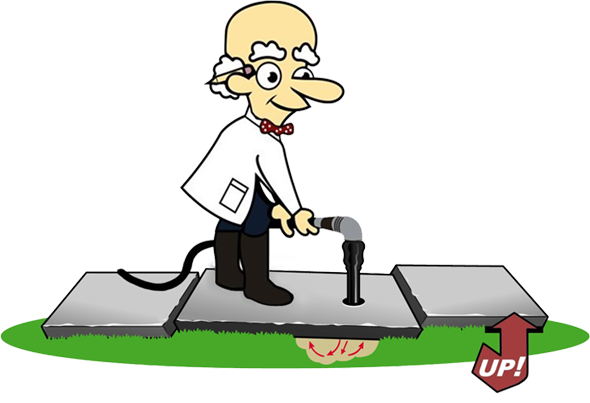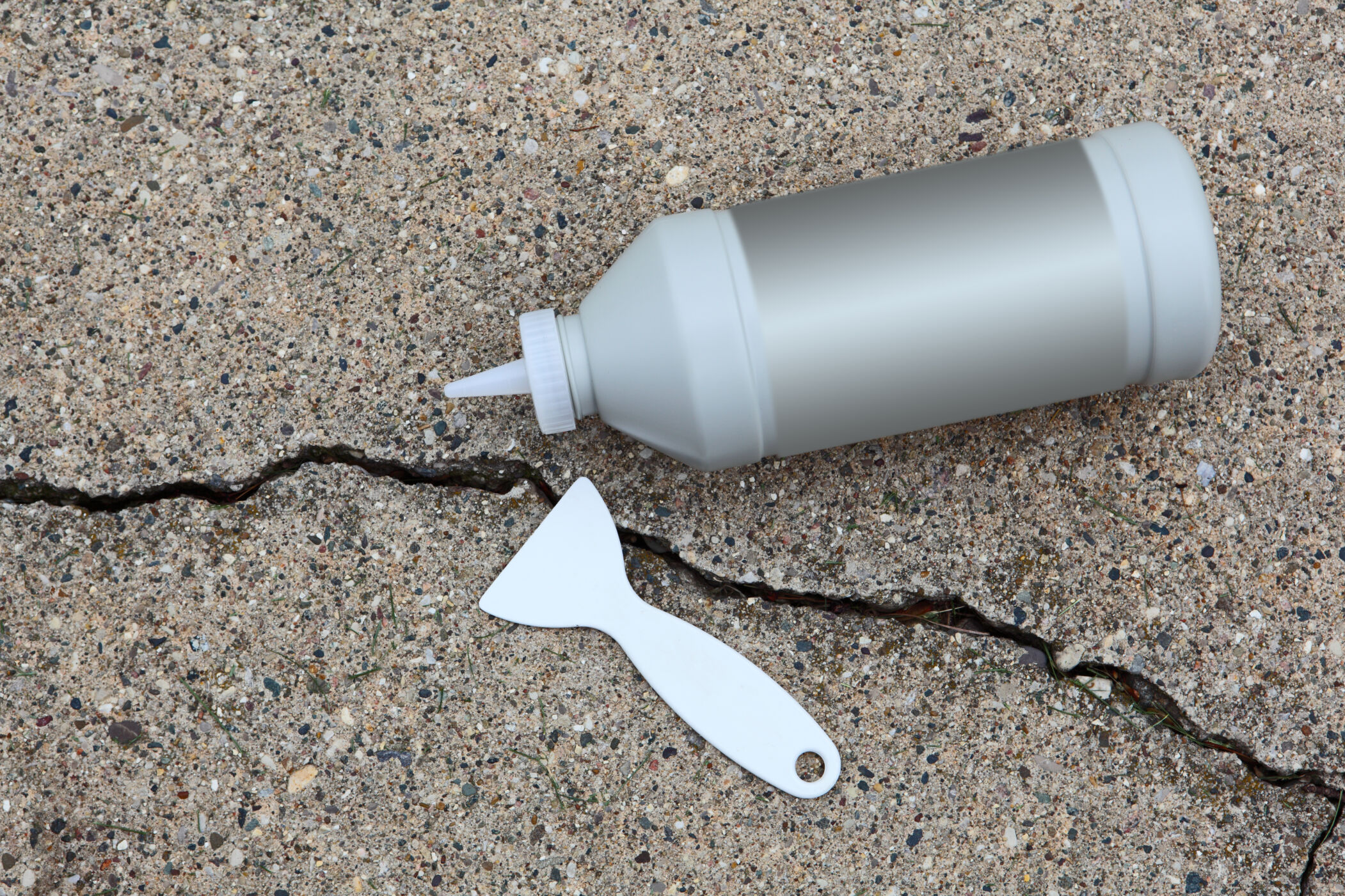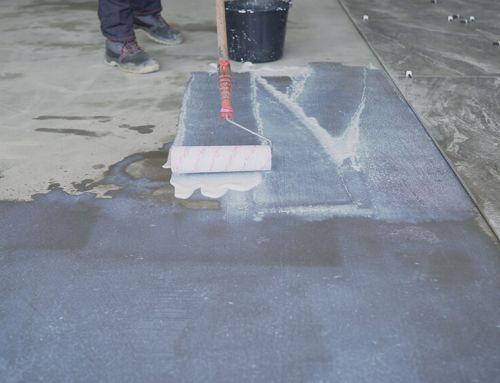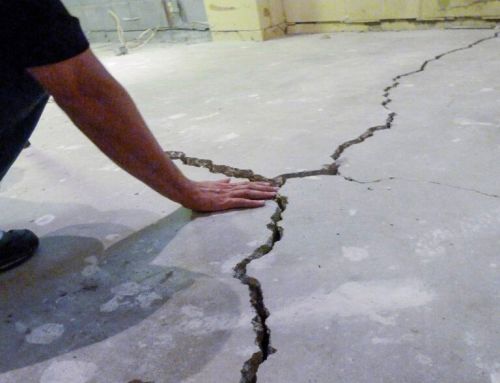IN THIS ARTICLE
By Kris Winters
February 29th, 2024
Concrete is a durable and versatile material, but it can develop cracks and gaps over time. These cracks not only affect the appearance of your concrete but can also lead to further damage if left untreated. That’s where caulking comes in. In this ultimate guide, we will discuss the causes of a cracked concrete slab and the importance of caulking concrete cracks and provide step-by-step instructions on properly sealing them to help prevent cracks.
Determining The Cause Before Repairing the Crack
It is essential to determine what caused your concrete to crack. Outdoor concrete slabs on soil in colder climates are subject to frost movement. Repairing a crack in your concrete slab with a rigid product like cement will only result in repeated failure from ground expansion due to frost. Let’s look at indoor and outdoor concrete separately.
Indoor Concrete
Aside from garage floor cracks in colder climates, indoor concrete, such as home concrete floors and basement floors, is not exposed to the elements. Here are reasons that can cause concrete floor cracks indoors:
- Shrinkage. As concrete dries, shrinkage takes place. Concrete can shrink 3/8″ over a 25′ foot span
- Settlement. Base failure and concrete settlement can occur if your concrete floor is installed on disturbed soils. If the cause is settlement, the floor should be supported through a process called mudjacking or polyjacking before any crack repair.
- Heavy Traffic. Vehicle weight or forklift traffic on poorly designed concrete slabs can cause concrete to crack.
Outdoor Concrete
Determining the cause of outdoor concrete cracks can be a bit more challenging. Here are some reasons that can cause an outdoor concrete slab to crack
- Improper expansion joint installation or placement. An expansion joint should be placed to allow for the concrete movement against walls and at 12′ foot intervals for 4” outdoor concrete slabs in colder climates.
- Settlement. Base failure and settlement can occur if your concrete slab is installed on disturbed soils. If the cause is settlement, the floor should be supported through a process called mudjacking or polyjacking before any crack repair.
- Frost Damage. As temperatures drop, the soil your concrete rests on freezes and expands, pushing upward. The base soil will defrost, and contract as the weather warms, and your concrete slab will drop again. This process repeats yearly.
- Erosion. Improperly diverted downspouts and poor yard drainage can cause base soils to erode, causing your concrete slab to drop.
While epoxy crack injection or other repair methods may be applicable for indoor cracks, outdoor crack repair requires using a non-sag or self-leveling urethane or silicone concrete caulk that will remain flexible.
Why Caulk Concrete Cracks?
Caulking concrete cracks is an essential part of concrete restoration and maintenance. As mentioned, cracks in concrete can occur due to various reasons, such as weathering, settling, or heavy traffic. These cracks can allow water and other substances to seep into the concrete, causing further damage and weakening the structure. By caulking these cracks, you can prevent further damage and extend the lifespan of your concrete.
Step 1: Prepare the Crack
Before you begin your concrete caulk repair, you need to prepare the crack. Use an electric grinder with a V-shaped blade to remove loose or broken concrete debris, dirt, or old caulking from the crack. If a grinder is unavailable, use a wire brush or a chisel. Then, use a vacuum, blower, or compressed air to remove any remaining debris and ensure the crack is clean and dry.
Once the concrete crack has been cleaned, place backer rod or sand in the deep sections of the crack to prevent the caulk material from escaping, as you can see in the Oliver Aguirre Concrete Repair Video: https://youtu.be/7B046P-X-4g?si=T3Nm–rwxG2x8yt4
Step 2: Choose the Right Concrete Caulk
Not all caulks are suitable for concrete cracks. Choosing a caulk specifically designed for concrete and crack sealing is essential.
Look for a waterproof, flexible caulk and highly adhesive to concrete. Silicone and polyurethane caulk are popular choices for concrete cracks. A self-leveling polyurethane caulk is usually preferred for ease of installation over non-sag caulk, which has to be tooled to finish.
Step 3: Cut the Tip of the Caulk Tube
Cut the caulk tube’s tip using a utility knife at a 45-degree angle. This will allow for a smooth and even application of the caulk.
Step 4: Apply the Caulk
Using a caulk gun, apply a thin and even bead of caulk along the crack. Make sure to fill the entire crack. With self-leveling caulk, be careful not to overfill the crack, causing the caulk to run out and on top of the concrete surface. With toolable or silicone caulk, smooth out any excess caulk with a putty knife or finger. For larger cracks, you may need to apply multiple layers of caulk, allowing each layer to dry before applying the next.
Step 5: Smooth Out the Caulk
To achieve a professional finish, use a caulk smoothing tool or a wet finger to smooth out the caulk. This will also help to ensure the caulk adheres properly to the concrete.
When using a self-leveling caulk, you can broadcast color-matching sand onto the surface of the caulk to achieve a closer color match. After a few minutes, lightly blow the excess sand off the surface of your caulk and concrete.
Step 6: Let the Caulk Dry
Allow the caulk to dry completely before walking or driving in the repaired area. The drying time will vary depending on the type of caulk used and the outside air temperature, so read the manufacturer’s instructions.
Step 7: Seal Your Concrete and Caulk
To protect the caulk and extend its lifespan, it is recommended to seal it with a concrete sealer. This will also help to prevent water and other substances from seeping into the crack.
By following these steps, you can effectively caulk concrete cracks and prevent further damage to your concrete. Remember to regularly inspect and re-caulk any new cracks that may appear to maintain the integrity of your concrete. With proper maintenance, your concrete will remain strong and durable for years.
If you see signs of concrete settlement and believe it may be the cause of your cracked concrete, you can visit our Learning Center.
There, you can find related concrete leveling articles such as:
Concrete Crack Repair: Causes, Types, and Solutions
Mudjacking Vs. Poly Jacking: Which is The Better Choice
The Ultimate Guide to Sealing Concrete
If you want to speak with our Concrete Chiropractor team about your cracked and uneven concrete, click the link below for an expert evaluation!
Click Here to Receive a FREE Estimate From Your Nearest Location
- Garage Floor Raising and Coating: The Ultimate Guide - June 4, 2024
- Mudjacking Cost: 5 Factors That Affect It - April 10, 2024
- What is The Average Cost of Concrete Leveling in Belle Mead, NJ? - April 4, 2024








